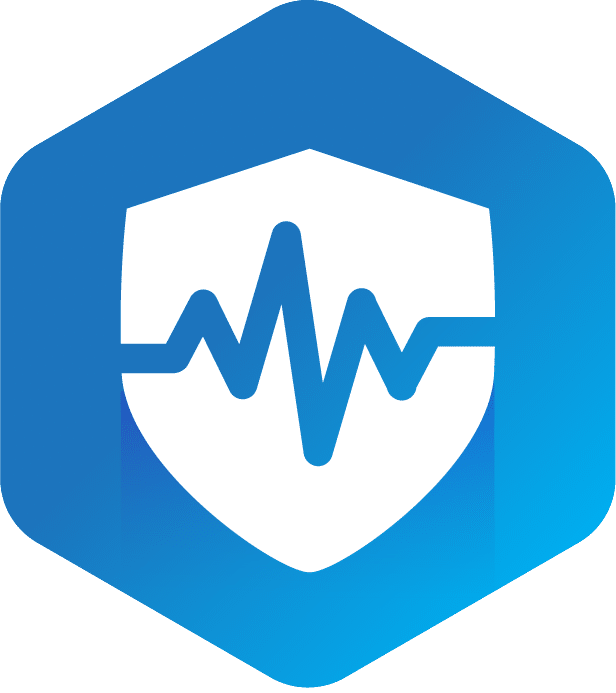If you work in the healthcare industry, then you know how important it is to protect patient information. Healthcare organizations are required by law to follow the Health Insurance Portability and Accountability Act (HIPAA), which sets guidelines for protecting patients’ electronic health information. One of the key components of HIPAA is its technical safeguards, which are designed to ensure that electronic protected health information (ePHI) remains secure.
Understanding HIPAA’s technical safeguards can be challenging, but it’s essential if you want to maintain compliance with the law. In this article, we’ll take a deep dive into these safeguards and explain what they entail. From access control to transmission security, we’ll cover everything you need to know about HIPAA’s technical safeguards so that you can feel confident in your ability to keep patient data safe and secure. So let’s get started!
You’re probably wondering, “What exactly are technical safeguards and how do they fit into HIPAA?”Well, let’s dive in! Technical safeguards are the security protocols that healthcare organizations must implement to protect electronic protected health information (ePHI). These safeguards encompass a range of measures such as risk analysis, encryption standards, authentication methods, and incident response.
One key aspect of technical safeguards is conducting regular risk analysis. This process involves identifying potential vulnerabilities in an organization’s ePHI storage and transmission systems and taking steps to mitigate those risks. Additionally, encryption standards play a crucial role in maintaining data privacy by ensuring that ePHI is only accessible by authorized personnel. Authentication methods like password protection and multi-factor authentication further bolster data security.
Incident response procedures must be established to ensure rapid response to any potential breaches or unauthorized access attempts. This includes creating clear policies for notifying affected parties and regulatory bodies about any data breaches or compromises. With these technical safeguards in place, healthcare organizations can confidently navigate the complex landscape of HIPAA compliance while safeguarding sensitive patient information from unauthorized access.
As you move on to the next section about ‘access control,’ keep in mind that understanding technical safeguards is essential for implementing effective access controls within your organization’s ePHI systems. By prioritizing security protocols like risk analysis, encryption standards, authentication methods, and incident response planning, you can help prevent costly data breaches while maintaining regulatory compliance with HIPAA regulations.
To properly manage who has permission to access sensitive information, it’s important to implement effective access controls. Physical security is a fundamental aspect of access control. It ensures that only those authorized to enter specific areas can do so by using physical barriers such as locks and key cards.
Authentication methods are also crucial in regulating access control. The most common authentication methods include passwords, PIN codes, and tokens. Role-based access is another vital component of access control. It limits the scope of permissions granted to users based on their assigned role within an organization. Least privilege is the principle that users should have only the minimum level of privileges necessary to perform their job functions effectively.
Biometric identification is an increasingly popular method for accessing secure systems and data. Biometric factors such as fingerprints, iris scans or facial recognition provide a higher degree of security than traditional authentication methods since they are unique to each individual.
Implementing effective access controls requires a comprehensive understanding of physical security, authentication methods, role-based access and biometric identification techniques. By limiting unauthorized entry into sensitive areas and regulating user permissions according to their roles, you can significantly reduce the risk of data breaches or other security incidents occurring in your organization. In the next section about audit controls, we will discuss how monitoring system activity provides valuable insights into potential violations or unauthorized activities within your IT environment.
When monitoring system activity with audit controls, you’ll gain valuable insights into potential security violations and unauthorized activities within your organization’s IT environment. Compliance requirements dictate that covered entities implement audit controls to ensure the confidentiality, integrity, and availability of electronic protected health information (ePHI). Through risk assessment, organizations can determine the frequency and scope of their compliance monitoring.
Audit controls are essential for detecting security incidents and responding promptly to mitigate any damage caused by a breach. With proper implementation of audit trails, organizations can track all user activity within their systems effectively. This will include login attempts, file access requests, and changes made to ePHI. By analyzing this data regularly, organizations can identify trends in authorized versus unauthorized access attempts.
Maintaining a culture of security awareness is critical when it comes to implementing effective audit controls. Employees must understand the importance of following procedures related to accessing ePHI while also recognizing what constitutes suspicious activity. Regular training sessions can help reinforce these concepts throughout an organization. In summary, audit controls serve as a crucial component for maintaining HIPAA compliance requirements and mitigating risks associated with unauthorized access or disclosure of ePHI. The next section will delve into integrity controls’ role in ensuring that electronic PHI remains accurate and unaltered over time without corrupting its original intent or meaning.
Ensuring the accuracy and authenticity of electronic PHI is crucial for maintaining patients’ trust and preventing potential legal repercussions. Integrity controls play a vital role in achieving this goal by ensuring data validation, error detection, and data consistency. Data validation techniques help to ensure that only authorized users can access electronic PHI, while error detection mechanisms detect any errors or inconsistencies in the information.
Encryption techniques are also essential in maintaining integrity controls. Encryption helps to secure electronic PHI by converting it into an unreadable format that can only be deciphered using a decryption key. This way, even if unauthorized personnel gain access to the information, they cannot read or use it without the encryption key.
Data backup is another critical aspect of maintaining integrity controls. Regular backups help prevent data loss due to system failures or other unforeseen circumstances. Additionally, having multiple copies of PHI ensures that any discrepancies or inconsistencies can be detected and resolved promptly.
Transmission security is another important aspect of HIPAA’s technical safeguards. By implementing transmission security controls such as authentication protocols and encryption technology, healthcare organizations can ensure that electronic PHI remains secure when transmitted between systems or devices.
One way to protect electronic PHI from unauthorized access is by implementing encryption techniques. Encryption methods scramble the information into an unreadable format that can only be deciphered with a secret key. This ensures that even if an attacker gains access to the data, they won’t be able to make sense of it without the proper decryption key.
In addition to encryption, network architecture plays a critical role in transmission security. Network segmentation and access controls should be used to limit access to sensitive data only to authorized personnel. Secure messaging platforms should also be used for communication, as they provide end-to-end encryption and prevent unauthorized interception of messages.
Having a strong data breach response plan in place is essential for maintaining transmission security. Regular risk assessments should be conducted to identify potential vulnerabilities in the system and ensure that appropriate measures are taken to mitigate them. In the event of a breach, having clear procedures for reporting and responding can help minimize damage and prevent further breaches from occurring.
Congratulations, you have successfully navigated through the intricacies of HIPAA’s technical safeguards. You now possess a comprehensive understanding of access control, audit controls, integrity controls, and transmission security. With this knowledge at your disposal, you are better equipped to protect sensitive patient information from unauthorized access or disclosure.
Just as a skilled captain guides their ship safely through treacherous waters, you can confidently steer your organization towards compliance with HIPAA’s regulations. By implementing robust technical safeguards, you will not only avoid costly data breaches but also foster trust with patients who entrust you with their private information. Remember, in the world of healthcare privacy and security, there is no such thing as being too cautious or diligent. So set sail on your journey towards HIPAA compliance today!

